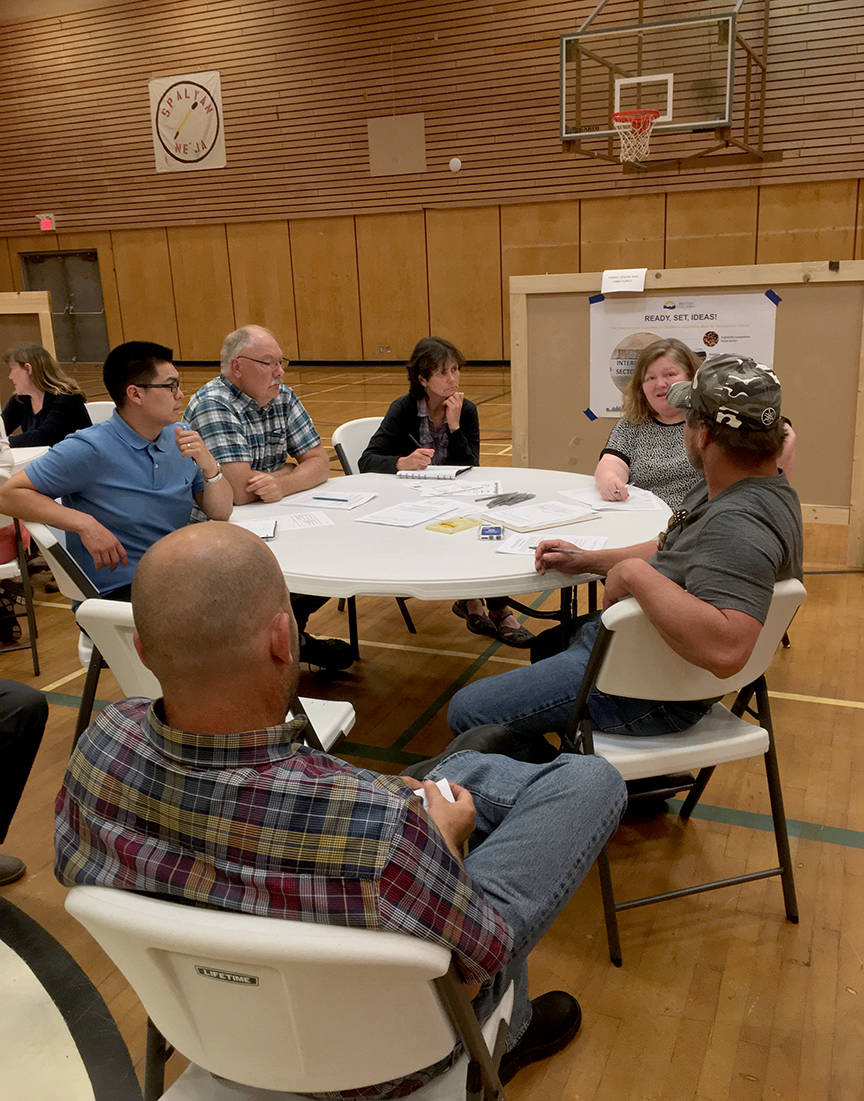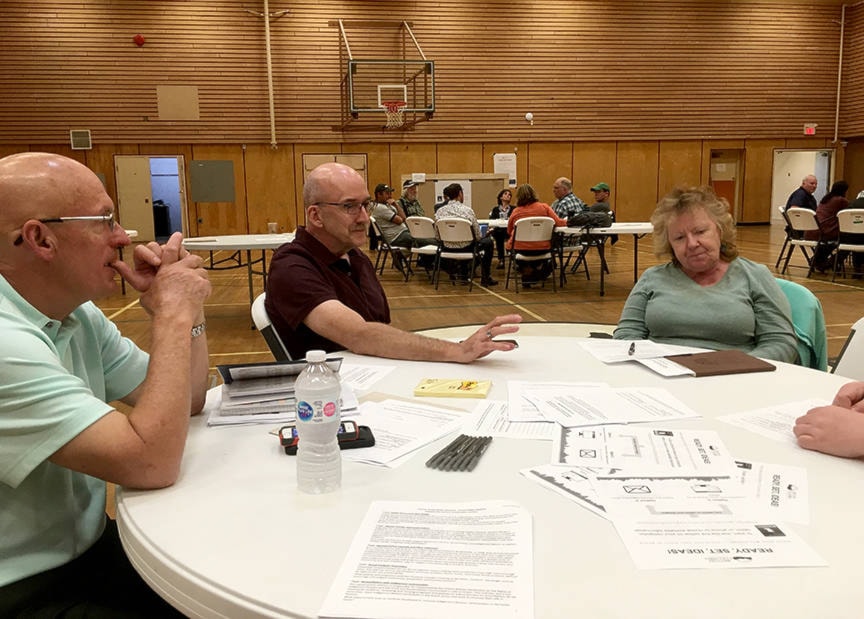A meeting on the Interior Forest Sector Renewal initiative was held in Burns Lake on July 25, the first such session scheduled for the Bulkley-Nechako region.
READ MORE: Outreach sessions planned for government forestry renewal
The first Interior engagement session took place in Williams Lake on July 18.
LOOK BACK: First of Interior Forest Sector Renewal meetings kicks off in Williams Lake
Brent May, Nadina District Manager with the Ministry of Forests, Lands, Natural Resource Operations and Rural Development (FLNRORD) opened the meeting that was held in the Gathering Place.
About 30 people attended, including Burns Lake mayor Dolores Funk, Granisle mayor Linda McGuire, and other representatives from forestry, local government and some First Nations.
A PowerPoint video was played which featured content from Doug Donaldson, FLNRORD Minister, and Mike Pedersen, Executive Director of Engagement of Interior Forest Sector Renewal.
Pedersen explained that the initiative comes as a means of meeting the challenges facing forestry in the Interior, such as lower lumber prices, wildfires, the softwood lumber dispute with the United States and falling Annual Allowable Cuts (AACs).
“We need to take a different approach to address these challenges, and secure and restore B.C.’s forestry jobs. We need to hear from you about your ideas and solutions,” said Donaldson in the video. “I’ve asked industry, labour, First Nations and leaders in forestry and in communities to come together and create a framework that will keep the industry thriving and grow it into tomorrow.”
The majority of the engagement session consisted of roundtable discussions centred on the policy areas of forest tenure and fibre supply, manufacturing capacity and fibre utilization, climate change and forest carbon, wood products innovation, reconciliation with Indigenous communities and fibre and sustainability of timber and non-timber values.
Of the information gathered from participants at the table where forest tenure and timber supply was discussed, Beth Eagles, Resource Manager with FLNRORD, told Lakes District News that some of the most impactful feedback related to timber license reform.
“Why are there expiry dates for some licenses? They should be kept in perpetuity so the timber can be sold when the market is there,” Eagles said, paraphrasing the feedback.
At the table on reconciliation with Indigenous communities, a big part of achieving reconciliation is giving First Nations communities the capacity to participate in forestry, the feedback summary found.
“There needs to be capacity building and the economic capacity needs to be there to allow people to participate in forestry,” said Sharon Marr, First Nations Relations Advisor with FLNRORD.
“There should be the right training, for example, so more people in Indigenous communities can learn how to use the machinery. At the moment those aspects aren’t yet where they should be. Opportunities aren’t yet being full utilized. ‘Let’s move forward together’ was the big takeaway that I heard.”
At the end of the session, Funk said the event brought out people who have a deep knowledge of forestry, but it didn’t bring out enough people.
“I was disappointed at the people not invited. All six [local] First Nations weren’t here. I didn’t even get an invitation. The Regional District of Bulkley-Nechako [RDBN] didn’t get an official invitation. To get the right plans you have to have the right people here.”
However, the mayor still thinks it was a worthwhile event that has opened up more communication with the provincial government.
“The process has the potential to change the way we do forestry in this area. There’s a lot of understanding of what the problems and roadblocks are. People now have the opportunity to talk to the province. For example, forestry methods of scaling are a roadblock to reducing waste. Or the fact that we don’t have three-phase power on the Southside. That limits our secondary and tertiary manufacturing.”
For Gerry Thiessen, mayor of Vanderhoof and chairperson of the RDBN, the engagement session wasn’t quite what he expected.
“I don’t think it lived up to being real engagement. I was hoping there would be a blueprint for each community. It’ll be hard to do. Each community has different needs. I’m not sure there will be those specific decisions made [through the engagement]. It will be interesting to see what recommendations get back to the premier,” he said.
The public feedback side of the Interior Forest Sector Renewal initiative runs until Oct. 11 at 4 p.m. and written submissions and online surveys are being accepted.
The discussion paper can be viewed at https://engage.gov.bc.ca/interiorforestrenewal.
Blair McBride
Multimedia reporter
Send Blair an email
Like Lakes District News on Facebook

